Archive for August, 2015
Paul Poiret: “En habillant” the 21st Century!
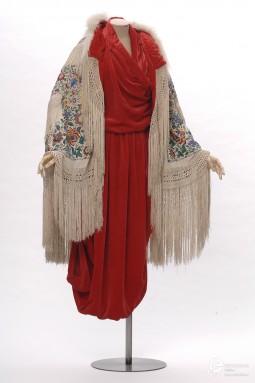
After 80 years of inactivity the fashion house Paul Poiret will have its revival.
Following Vionnet, Schiaparelli and Charles James, another illustrious brand from the past will be brought back to life. Recently acquired by Korean company Shinsegae International, the brand Paul Poiret will be the next one on the list of illustrious fashion revivals.

Evening dress "Ver Luisant" designed by Paul Poiret in 1922. Photo: Stephan Klonk. Collection Kunstgewerbemuseum, Staatliche Museen zu Berlin CC-BY-NC-SA
Originally founded in 1903 by Paul Poiret, the Maison got its success for its innovative creations, whose loose fitting liberated women from the constriction of corsets. Fairly influenced by the feeling for Orientalism that pervaded Paris since the first performance of Ballets Russes in 1909, Poiret’s designs reflected the sumptuousness of the exotic costumes and his “One Thousand and a Second Night” ball is still remembered as one of the most famous ball of the 20th century. Infamously outrageous, his culottes were also denounced by Pope Pio X in 1911.
Celebrated in 2007 with a monographic exhibition at MET, “Poiret: King of Fashion” and also featured in MET’s latest exhibition “China: Through the Looking Glass”, this last take on Paul Poiret’s work marks the ultimate attempt to try to bring back the splendour of past times, also facing all the difficulties that a dormant fashion house like that of Paul Poiret brings along.
Browse through our archive to find the vast collection of creations by Paul Poiret and decide yourself if his style will “habiller l’epoque” once again!
Whrend der schulzeit ghostwriter kosten aktiv im schlerzeitungsteam
Inside the Museum at FIT’s
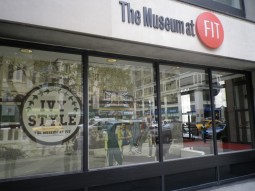
The Museum at FIT, accredited by the American Alliance of Museums, is one of a selected group of specialized fashion institutions.
Its mission is to advance the knowledge of fashion through exhibitions, programs and publications. Founded in 1969, the Museum’s exhibitions began to be presented in 1975. Dr. Valerie Steele has been director of The Museum at FIT since 2003 and chief curator since 1997.
Best known for its innovative and award winning special exhibitions, the FIT Museum’s permanent collection encompasses 50,000 garments and accessories from the 18th century to the present. In the three galleries it is composed by, museum hosts several exhibition with historically and artistically significant objects from the museum’s permanent collection. In addition there is a gallery that feature the works of the students of FIT, which has been included in the top ten of the best international fashion schools by BoF.
The Museum underwent a several-year renovation, to be organized in a new space to house some of fashion’s greatest treasures. In this occasion Dr. Valerie Steele has declared that the biggest part of educating the public is to constantly keep up with the museum’s collection. If approximately 50,000 items seems like an overflowing archive, to her it is only the beginning.
Find more information about Museum at FIT current exhibition “Global Fashion Capitals” in Europeana Fashion Event area!
To start using your ps3 controller, you’ll have to buy controllers for all from https://besttrackingapps.com the cydia store for $1
History of the Hand Fan

The origin of the hand fan is quite uncertain. Thanks to artistic representations we know that, around 3000 b.C. fans were used by Egyptians. Egyptian fans were big, fixed, and semicircular shaped, made with feathers and with long handles. They had double function: blowing air and scaring away insects. Also it was a sacred instrument, used in religious ceremonies. Greeks and Romans used fans, too. The most famous was the “Flabellum” that in the middle Ages was used during the Christian liturgy.
The folding hand fan is recognized as being invented in Japan or China, modeled after the folding wings of a bat. In the 1500s the device was taken to Europe by way of trade routes and became a stylish symbol of wealth and class. Its big success is due to Caterina De’ Medici, who carried some of them in her trousseau at the French Court. Made in precious materials, the fan was painted on thin leather that was cut as Italian laces. While in Japan they were made in iron and used by men in war, to spread messages or, sometimes, as a weapon.

Box renter's fan for the 1787-1788 season, printed with plans of the Kings Theatre and subscribers' boxes. Printed paper leaf with ivory sticks. Made in London, 1787. Courtesy of Victoria and Albert Museum. CC BY SA
During XVIII and XIX century, fans became integral part of court etiquette. The aristocrat women had one for any occasion: to proclaim an engagement, to be included in the trousseau, to be introduced in court society, for the birth of children and for mournful happenings. In 1700s there were also fan to be used in church, or with theater’s and geographical maps. In the same period women developed a secret language, to make signals with fans, that was codified in XIX sec and was used to engage secret dates.

Bridesmaid's miniature fan, gilded and lithographed with pastoral 18th-century scene of shepherdess and suitor. Lithographed paper, hand-painted wood. 1850. Courtesy of Vicoria and Albert Museum. CC BY SA
The design of the screen fan is a fixed handle, most often made out of exquisitely turned wood, fixed to a flat screen. The screen could be made out of silk stretched on a frame or thin wood, leather or papier mache. In China they used to insert little porcelain details on the silk screen. The surface is often exquisitely painted with different kind of scenes. The most beautiful fans were produced in Italy, France and England. During the XVIII century, Italy spread the trend of “Grand Tour” fans, painted with images of urban landscapes, archeological sites and natural views, that were bought by aristocrat traveler as souvenir of their Italian holidays.
Discover our collection of fans from around the world on Europeana Fashion portal
With access to the students’ results in a comprehensive, quick way, teachers are help writing a essay better able to tailor their lessons to the needs of the students
“Fast Fashion. The dark side of fashion” at Museum für Kunst und Gewerbe, Hamburg
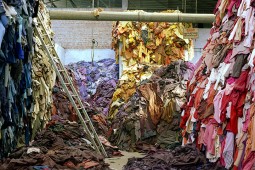
While fashion industry accelerates its pace, a new exhibition raises the awareness on the side effects of fast fashion and mass production.
Are we really conscious of what we wear? “Fast Fashion. The dark side of fashion” aims to answer this question exposing the results of a wrong, unaware behavior. Images of seamstresses on the brink of exhaustion and collapsed factory buildings with hundreds of dead are not the only shades of a glamorous lifestyle, but also its ecological impact harms the environment and mankind permanently.
Sustainability and consciousness are however a topical issue for many designers now: a well-known example is, for instance, Bruno Pieters’s “Honest By”, that offers products with complete transparency in price and manufactory. In addition, news have announced a partnership between Kering and London College of Fashion to encourage sustainable fashion design among its students.
For German speaking readers, “Fast Fashion. The dark side of fashion”’ blog http://stilbrise.de/ collects reports, information and news on the accompanying program, regular interviews and impressions from Instagram and Twitter. It also broadcasts addresses for fair fashion and DIY ideas along with special looks and original ideas on topics such as secondhand buying, upcycling and transformation, collected from the visitors of the exhibitions.
The exhibiton will remain on until the 25th of October. For more information, please visit Museum für Kunst und Gewerbe, Hamburg.
Instead of waiting for test time to find out areas homework-writer.com of low comprehension, teachers can find out before they teach their next lesson
“The 50s: Fashion in France 1947 – 1957″ at Bilbao Fine Arts Museum
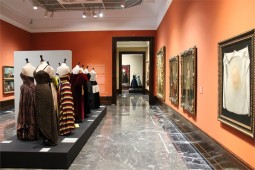
The exhibition organised with special collaboration from Palais Galliera, musée de la Mode de la Ville de Paris, and Paris Musées, recreates the years in which glamour and couture dominated over fashion.
Covering a period in time that was decisive for France to establish itself as a fashion country, entitling Paris as the international capital of fashion, “The 50s: Fashion in France 1947 – 1957” retraces the evolution of the female form from the birth of the New Look to the death of Christian Dior and the advent of Yves Saint Laurent.
As the last decade of haute couture, the 50s were ruled by fashion designers that wanted to free women from the restrictions they had to face during the Second World War with new wide gowns and skirts in rich fabrics. It was the New Look created by Christian Dior in 1947 that acted as a turning point. At first mildly criticized, it became soon desirable for every woman worldwide. Together with other designers such as Pierre Balmain, Cristòbal Balenciaga, Jaques Fath and Jean Dessès, Dior shaped fashion imposing his own, glamorous taste.
The exhibition, that was on view from July to November at the Palais Galliera Museum of Fashion in Paris, features now one hundred remarkable models and accessories from the Palais Galliera collection selected by museum’s director Olivier Saillard. Miren Arzalluz, expert in fashion and costume history, is associate curator for the Bilbao exhibition.
“The 50s: Fashion in France 1947 – 1957″ will be on through the 31st of August. Visit Museo de Bellas Artes de Bilbao for more information.
Browse through Europeana Fashion Archive to find more about the 50s in fashion! https://essaydragon.com/
“WILLY VANDERPERRE – Raf Simons 1995-2015” at 032c Workshop Gallery
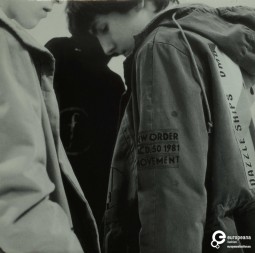
Held at 032c Workshop Gallery, in Berlin, the retrospective “WILLY VANDERPERRE – Raf Simons 1995-2015” explores the 20 years long collaboration between fashion designer Raf Simons and photographer Willy Vanderperre.
An extension of the article featured in the Fall/Winter 2014-2015 issue of 032c Magazine that celebrated the 20th anniversary of the brand, the exhibition, curated by Vanderperre himself, is staged in a 8 meters long vitrine, thought as a schoolhouse locker. The display consists of memories collected during the years from all Raf Simon’s brand lines in form of photos, stickers and objects such as a skate all covered with pictures by the photographer.

Raf Simons' Collection Autumn/WInter 2003-2004. Collection MoMu - Modemuseum Provincie Antwerpen. All rights reserved.
The friendship between Simons and Vanderperre dates back to the ‘90s, when they were both students in Antwerp and used to meet at Wiztli Poetzli café. Their collaboration brought us some of most evocative images of contemporary fashion. Focusing on youth, which still is more than an everlasting source of inspirations for both them, the exhibition aims to tell the story that bounds their work together.
The exhibition will remain on until the 21st August at St Agnes, Alexandrinenstr. 118-121, Berlin. Visit 032c Workshop to find more information. Browse through our archive to find more youthful designes and images by Raf Simons!
Big data also gives administrators https://essaynara.com better tools with which they can analyze teaching effectiveness
When Fashion meets the Future: Jessica Minh Anh at Gemasolar
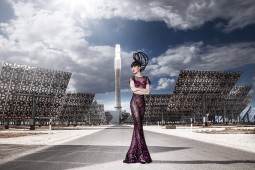
The world’s first solar powered catwalk took place last July at the Gemasolar plant outside Sevilla in southern Spain.
Model and producer Jessica Minh Anh transformed the award-winning solar power plant, Gemasolar, into the world’s newest catwalk.

Jessica Mihn Ahn's J Summer Fashion Show 2015 at Gemasolar solar power plant in Seville, Spain. Photo courtesy of J Model Management
Gemasolar is the first plant in the world that produces electricity using only the power of the sun and it has already served as a setting for brands such as Louis Vuitton, Mercedes Benz, Ford and PlayStation.

J Summer Fashion Show 2015 - Jessica Minh Anh and models. Photo courtesy of J Model Management. All rights reserved.
Paris-based Minh Anh produces these unusual shows three times a year, placed in most iconic places including Eiffel Tower, Grand Canyon’s Skywalk, World’s Trade Centre and in 2015 she’s celebrating the 10th anniversary of staging them. This time the innovative event has presented haute couture and ready-to-wear collections in a futuristic 100-metre runway, surrounded by thousands of mirrors.
Example 1 at roosevelt my homework help within homeworkhelper.net elementary school near san francisco, teachers use software called dibels with reading assignments to better determine which students need help and what areas they need help in
“Mademoiselle Privé”: Chanel at Saatchi Gallery!
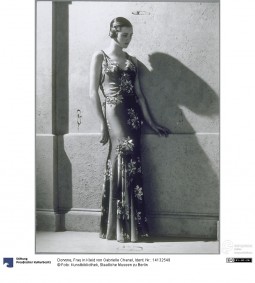
Saatchi Gallery announces a fashion exhibition in October featuring the work of Coco Chanel!
“Mademoiselle Privé”, the exhibition that will be held at Saatchi Gallery, London, is going to open on the 13th October 2015. Featuring the haute couture collections of the French Maison, the exhibition includes some pieces exclusively designed by Karl Lagerfeld and will present “an enchanted journey through the House’s creativity”.

Girl wearing dress by Gabrielle Chanel, photo by Dorvyne, 1930 ca. Collection Kunstbibliothek Staatliche Museen zu Berlin, CC-BY-NC-SA
Installed in all the three floors of the gallery, the display will also show the reedition of High Jewellery “Bijoux de Diamants” collection created in 1932 and the iconic fragrance CHANEL N°5, offering a glimpse into the universe of the Parisian fashion house.
Founded in 1909 by legendary Gabrielle Bonheur Chanel, the fashion house became one of the most famous Maison, celebrated in popular culture’s for its innovative spirit, that has led the brand through 106 years of history. “Mademoiselle Privé” will get you to the origins of CHANEL’s creations, to let you experience its intricate world through Coco Chanel work and the recent designs of Karl Lagerfeld.
Visit Saatchi Gallery for more information and subscribe here to get updated on the event. While waiting for the exhibition, browse through our archive to find more CHANEL beautiful pieces!
Teachers at the school need to study the analytics, and from https://pro-essay-writer.com there they can help the students who need it
Follow Europeana Fashion on Instagram!
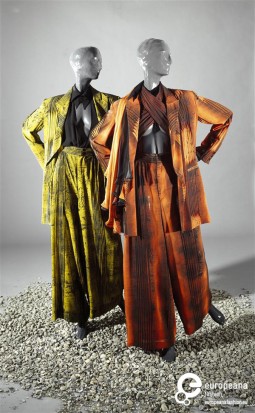
Europeana Fashion is now on Instagram! Follow us at @europeanafashionofficial!

Women's ensemble designed by Claude Montana and Ella Koopman, 1994. Collection Gemeentemuseum Den Haag, all rights reserved.
Have a look at our Instagram account to find everyday a selection of the most beautiful items from our archive and exclusive materials from our partners. A challenging way to display fashion heritage, through our Instagram we aim to share more lively, instant materials and pictures to get people involved and to offer them an insight into our fashion and costume collection.
So stay tuned and follow @europeanafashionofficial! We’ve seen time and again that simply measuring teachers by standardized test scores is an ineffective paper writers for hire of https://paper-writer.org method
Emilio Pucci: Landing on the Moon!
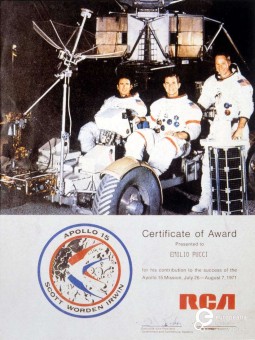
Apollo 15 mission, whose logo patch was designed by Florentine designer Emilio Pucci, landed back on earth this day in 1971.
Fashion designer Emilio Pucci was an eclectic. He showed his talent in many different fields, he had been captain and pilot during the war, high level athlete and in 1971 he also designed the logo for NASA Apollo 15 lunar mission.
The fourth mission that brought humans on the moon, who landed on the satellite surface on 30 July 1971 to take pictures and set up scientific experiments, it returned to earth on 7 August 1971.
As it was told by Alfred Worden, who took part to the mission in the Command and Service Module that orbited around the moon, Emilio Pucci was contacted through a mutual friend to help the crew with the design of the mission patch, after they had examined 540 other designs which were found or too mechanical or too distant to the idea of flight. Pucci experience with aviation was indeed fundamental for the assignment. The logo, originally square shaped and in Pucci’s traditional blues, purples and greens, features three stylized birds which indicates the three astronauts taking part to the mission. Their formation, one on the top and two closer to the background, shows who actually landed. The birds were later coloured in white, red and blue and a background was added to represent an artist concept of the surface of the landing site.
Emillio Pucci did not ask for any reward for this work, he only asked the astronauts to bring three gold medals to the moon and back. He then gave two of these medals to his daughter and to that time reigning Pope, Paul VI, while he kept the third one as a memory of that once-in-a-lifetime experience.
Find more examples of Emilio Pucci aeronautical experience in his designs in Europeana Fashion Archive!
Beauftragen sie autor mariam schreib-essay.com/hausarbeit/ w ber content









